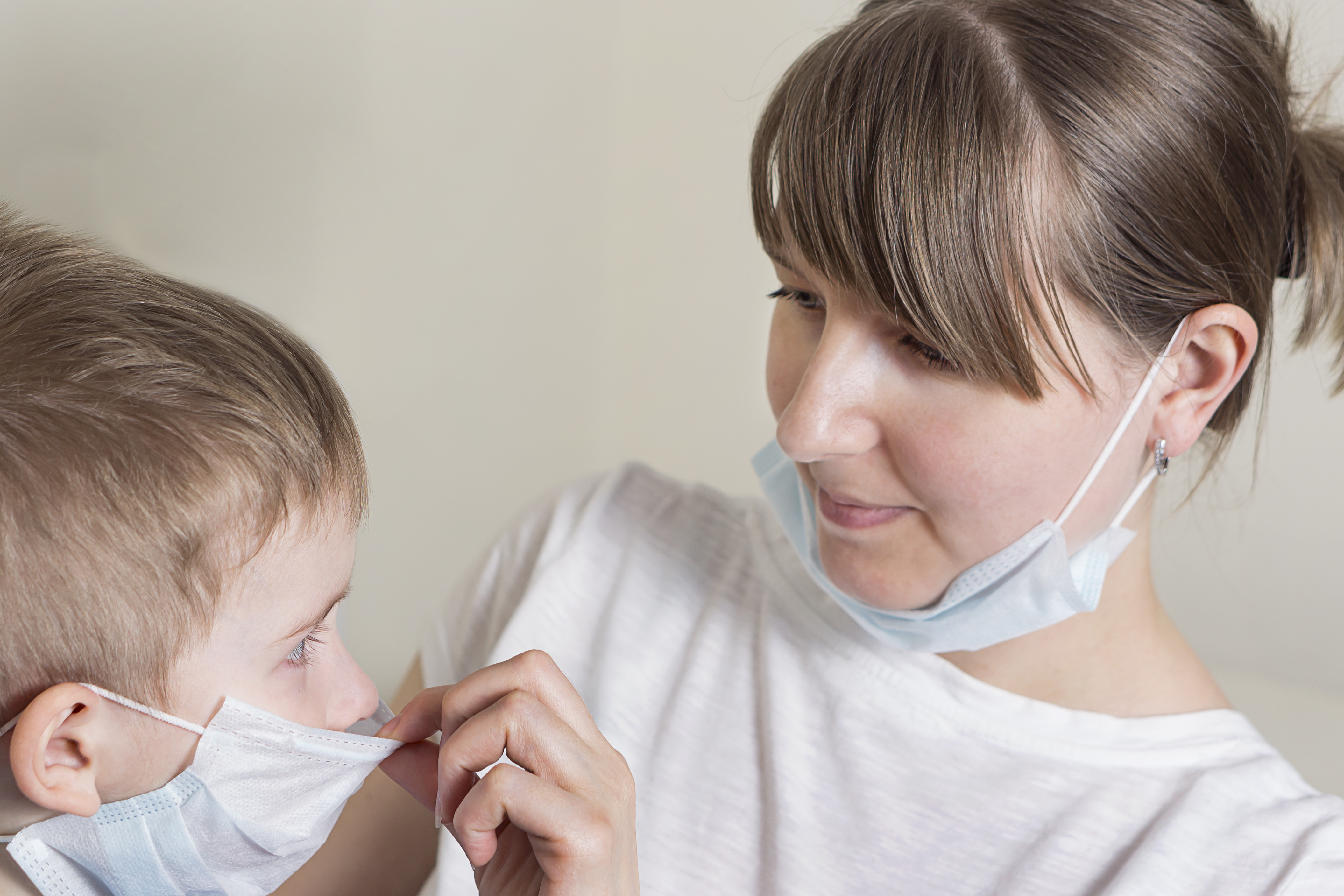
To protect against COVID-19, the Centers for Disease Control and Prevention (CDC) recommends people wear face masks or face coverings in public areas when social distancing is difficult to maintain. But what does this recommendation mean for children? The below Q&A—completed with the expertise of pediatric and adolescent medicine physician, Dr. Alexa Kemeny—will answer many mask-related concerns that may be weighing heavily on the minds of parents at this time.
Q. Is it safe for my young child to wear a mask?
Yes, it is safe for your child to wear a mask if he or she is older than two years and does not have health issues that would make breathing harder with a face covering. Examples of such conditions include illnesses that cause neurological or muscular weakness and developmental and emotional conditions that make wearing a mask overly stressful.
Q. Are there mask guidelines specific to children?
The most important guideline specific to children is the age restriction. Children under the age of two years are at risk of suffocation and strangulation if their faces are covered or when ties are tightened around their necks.
Q. What type of mask is best for my child and how do I get it to fit properly?
Masks made from at least two layers of fabric are best for children over the age of two. Children do not need N95 respirators or plastic face shields. The mask should cover the mouth and nose and be secured by loops around the ears. If the mask slips from the child’s nose, it is not effective.
Q. How do I care for the mask?
Masks should be washed in a washing machine. The frequency of washing depends on frequency of use, but they should be washed when visibly soiled or have been touched excessively. Masks should be replaced if they are visibly damaged. There are excellent instructions for making and caring for masks on the CDC’s website.
Most importantly, HANDS MUST BE WASHED IMMEDIATELY after removing a face mask.
Q. Should children wear a mask any time they are outside of the house?
No. Masks must be worn whenever you are near people outside of your household such as when you enter stores and health care facilities and when physical distancing cannot be practiced. If you take a walk and stay at least six feet from other walkers, or if your child plays outside with you, you do not need to wear masks. Masks do not need to be worn in the car as long as you are only with household members.
Q. If everyone is wearing a mask, can we have playdates or interact with other families?
Unfortunately, no. Masks are not a replacement for social distancing and staying safe at home.
Q. What if my child is afraid to wear a mask?
Parents should first demonstrate by wearing their own mask. Allow your child to practice wearing a mask for very short periods of time, gradually increasing as he or she adjusts to wearing it. Depending on the age of your child, it also may help to make it a game. Remind them that many of their favorite characters, from Super Why to Spiderman, wear partial or complete face masks! Have them imagine what kind of superpowers they might have when they wear a mask. You can also draw an image on the mask or let your child decorate it themselves - just do not use stickers or glued items that can obstruct air flow.
Q. How do I explain the need to wear a mask to my child?
Young children just need to be told that wearing a mask is one way we can keep ourselves and others healthy, just like washing our hands and wearing sunscreen. Older children who know about the coronavirus pandemic probably understand why the mask is needed but talking to them about it provides an opportunity to explore their fears and to check in on how they’re coping with the stresses of social distancing and stay-at-home requirements.
Q. How can I get my young child to keep their mask on?
How can you get a young child to do anything 😊?! Making sure the mask fits comfortably is a good start, but each child’s tolerance is different. If your child cannot keep the mask on or touches it frequently, or it’s not safe for your child to wear a mask because of age or health status, it is best to avoid situations and locations where masks improve safety. Otherwise, being a good role model and wearing yours will help show that we can all do our part to protect ourselves and others!
Telemedicine Options Now Available!
Our pediatric department providers are offering video visits for children and are happy to address any COVID-19-related concerns virtually during this time.
